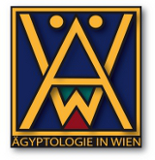|
|
Koura, B. (1999). Die “7-Heiligen Öle” und andere Öl- und Fettnamen. Eine lexikographische Untersuchung zu den Bezeichnungen von Ölen, Fetten und Salben bei den Alten Ägyptern von der Frühzeit bis zum Anfang der Ptolemäerzeit (von 3000 v. Chr. – ca. 305 v. Chr.). Aegyptiaca Monasteriensia, 2. Ph.D. thesis, Graefe, E., Aachen.
|


|
|
|
Murray, M. A. (2000). Viticulture and wine production. In I. P. T. and S. Nicholson (Ed.), Ancient Egyptian Materials and Technology (pp. 577–608). Cambridge.
Abstract: Mary Anne Murray (viticulture and wine production) with Neil Boulton and Carl Heron (chemical detection of wine)
|


|
|
|
Brovarski, E. (2010). The Hare and Oryx Nomes in the First Intermediate Period and Early Middle Kingdom. In S. McFarlane A. and Binder A. Woods (Ed.), Egyptian Culture and Society. Studies in Honour of Naguib Kanawati (Vol. I, pp. 31–85). CASAE, Cahier No 38. Cairo: Conseil Supreme des Antiquités de l´Égypte.
|


|
|
|
Evans, L. (2010). Otter or Mongoose? Chewing over the Evidence in Wall Scenes. In S. McFarlane A. and Binder A. Woods (Ed.), Egyptian Culture and Society. Studies in Honour of Naguib Kanawati (Vol. I, pp. 119–129). CASAE, Cahier No 38. Cairo: Conseil Supreme des Antiquités de l´Égypte.
|


|
|
|
Gillam, R. (2010). From Meir to Quseir El-Amarna and back again: The Cusite Nome in SAT and on the Ground. In S. McFarlane A. and Binder A. Woods (Ed.), Egyptian Culture and Society. Studies in Honour of Naguib Kanawati (Vol. I, pp. 131–158). CASAE, Cahier No 38. Cairo: Conseil Supreme des Antiquités de l´Égypte.
|


|

